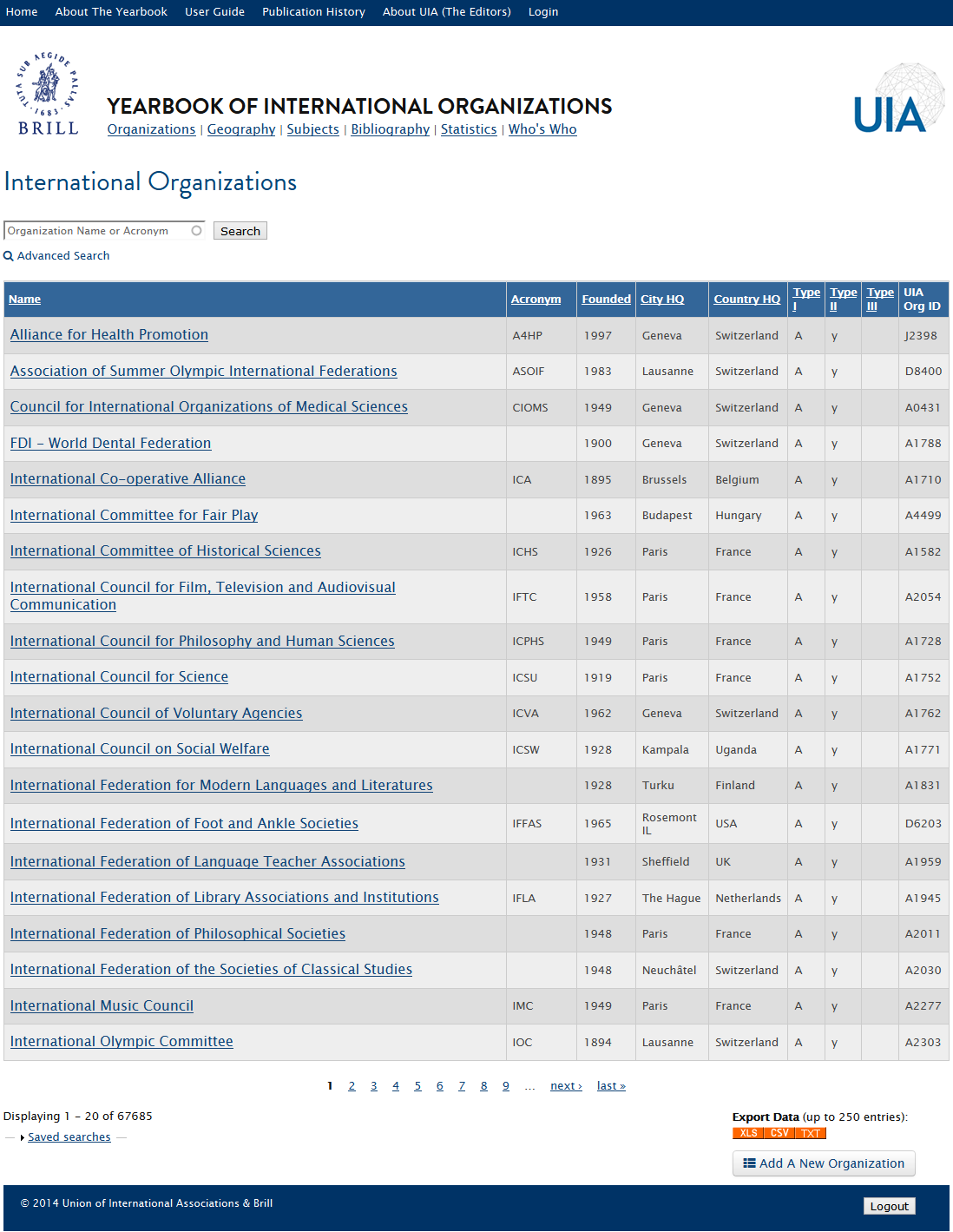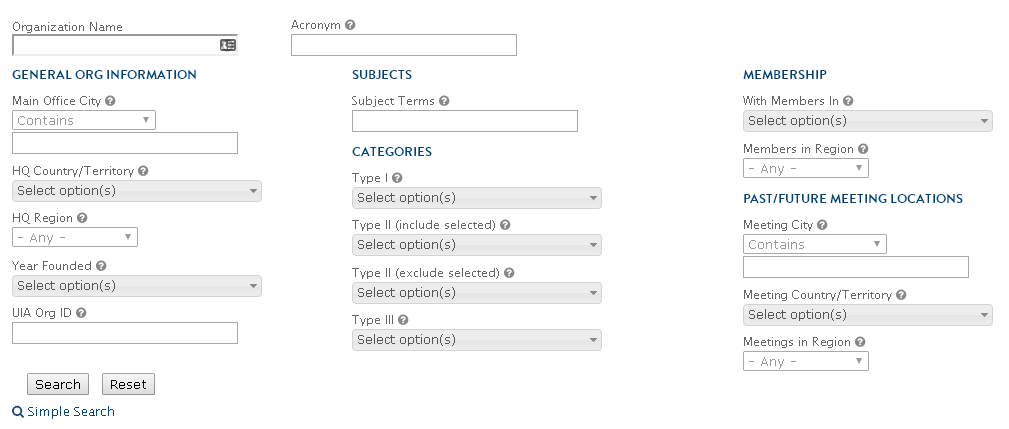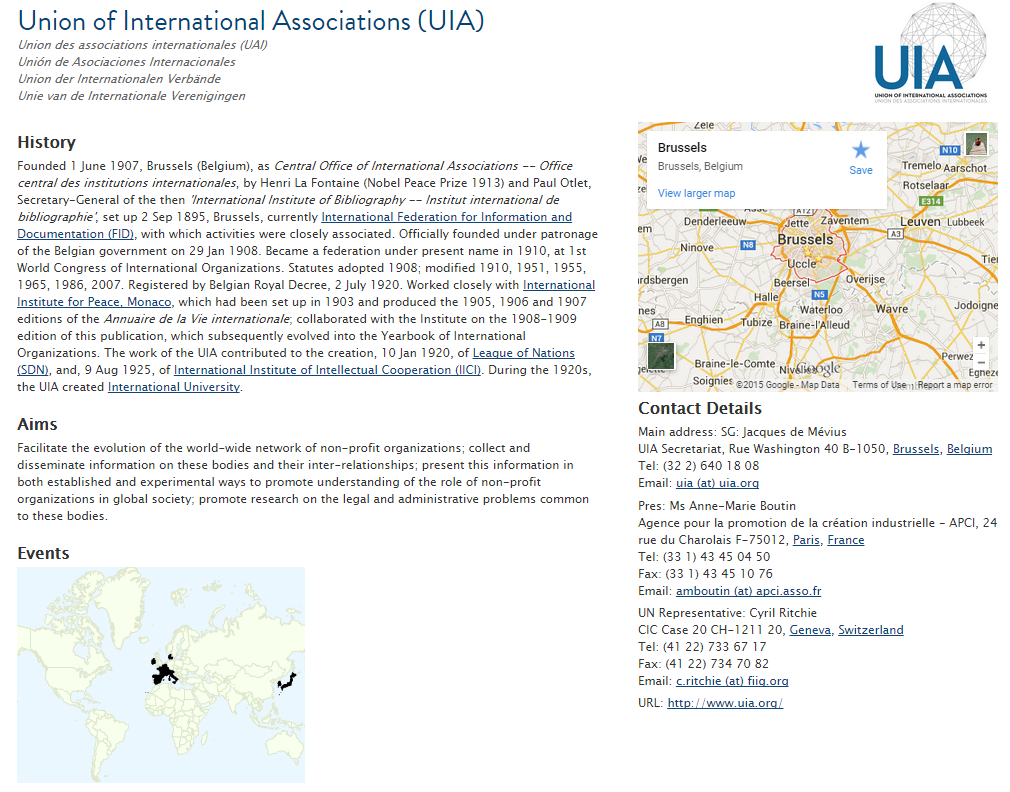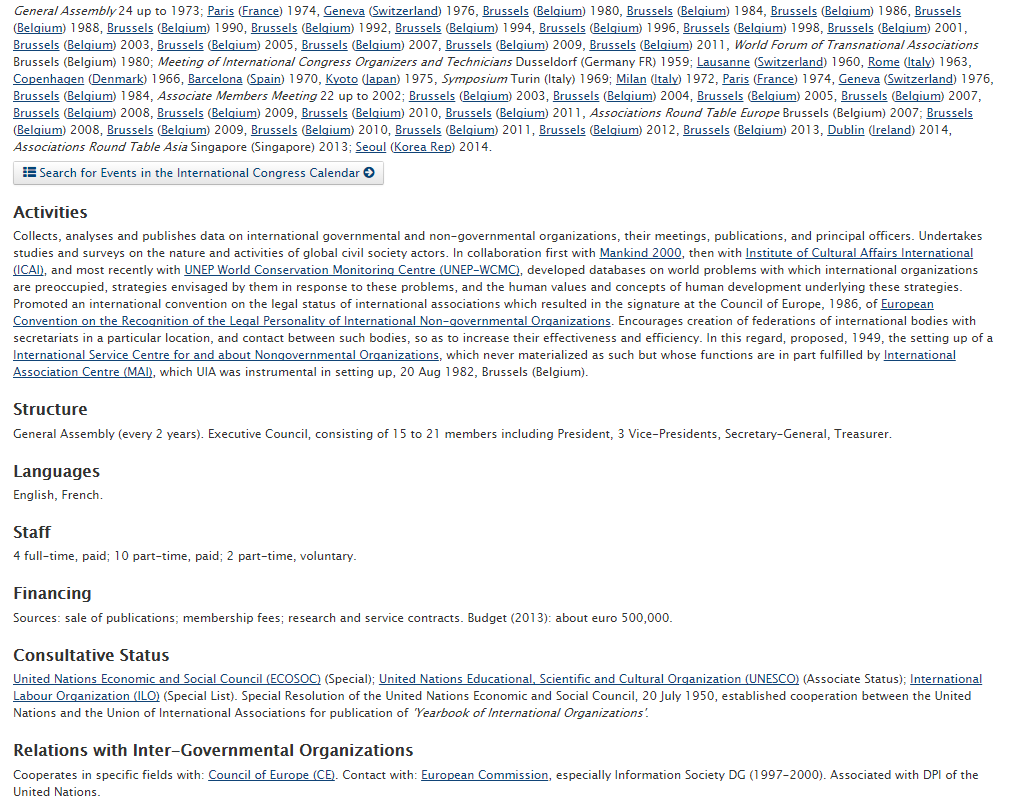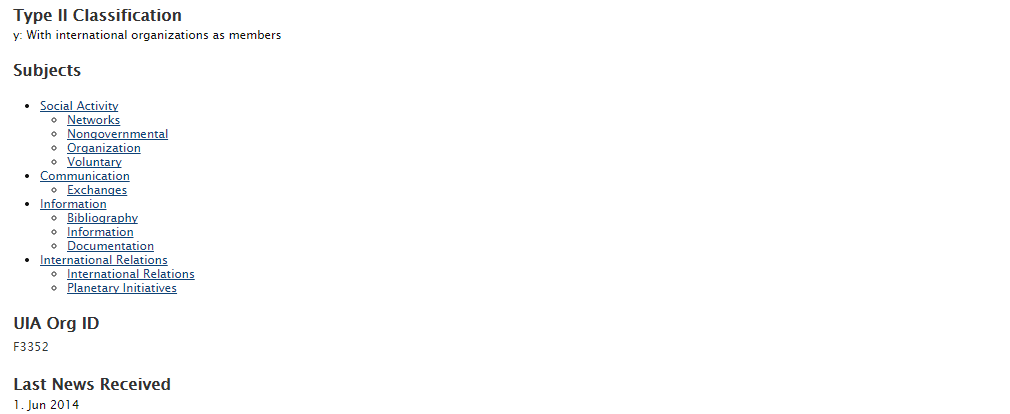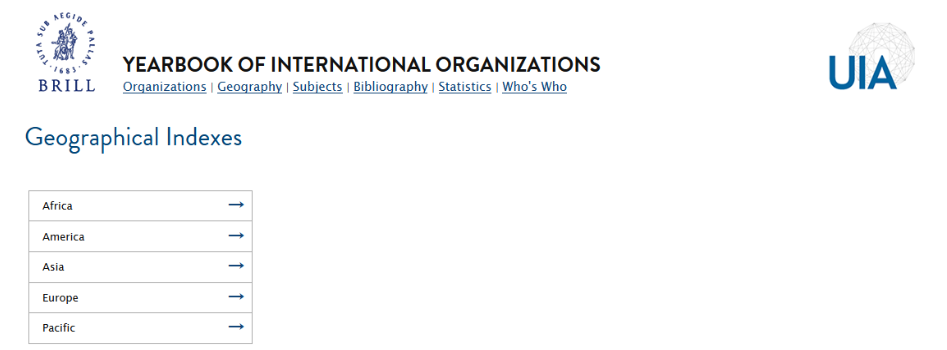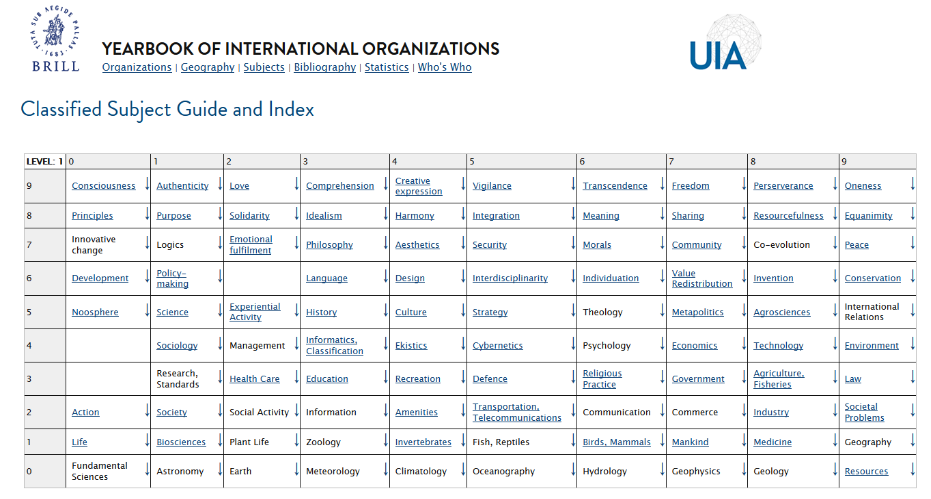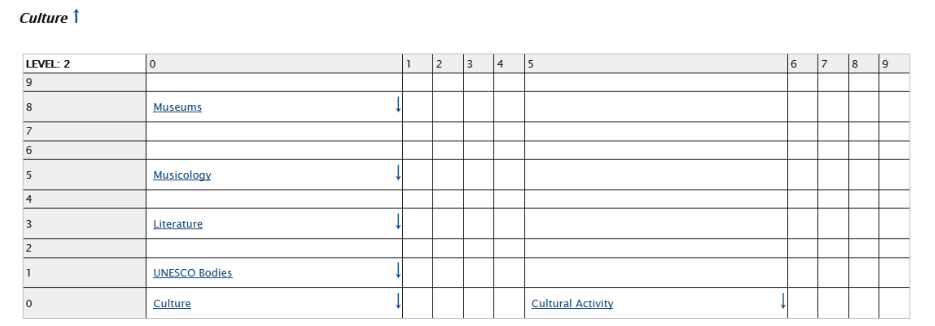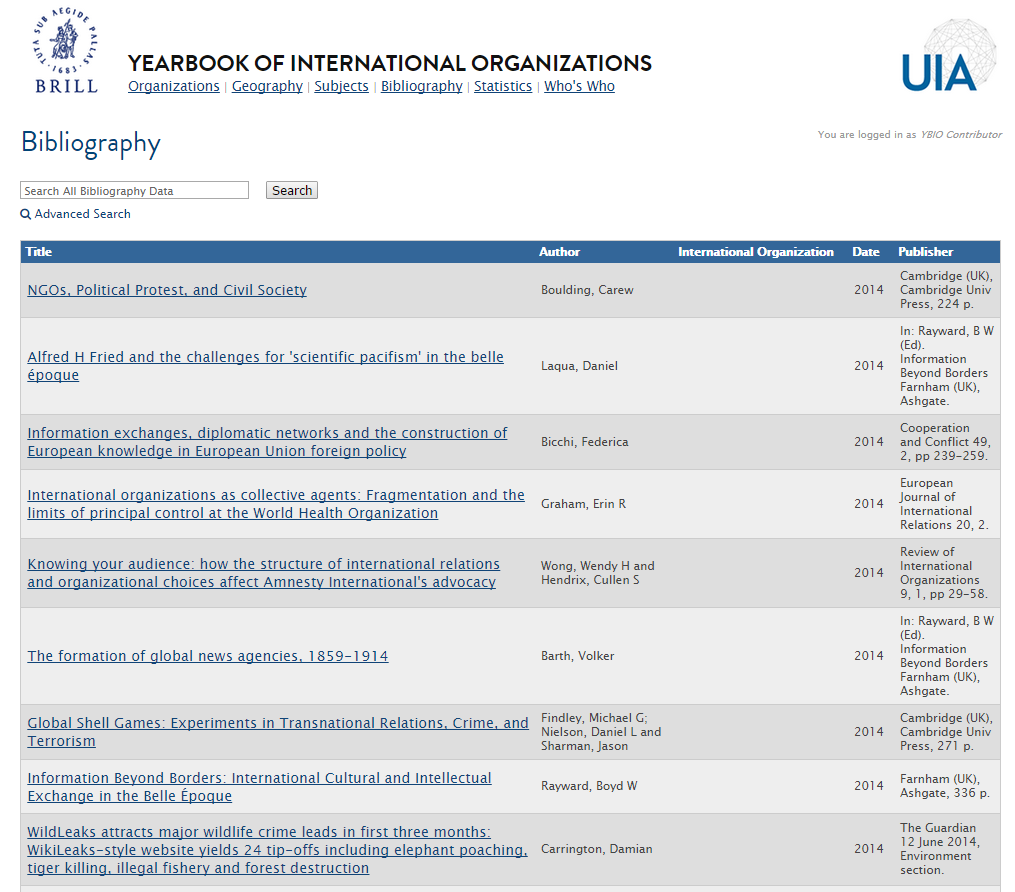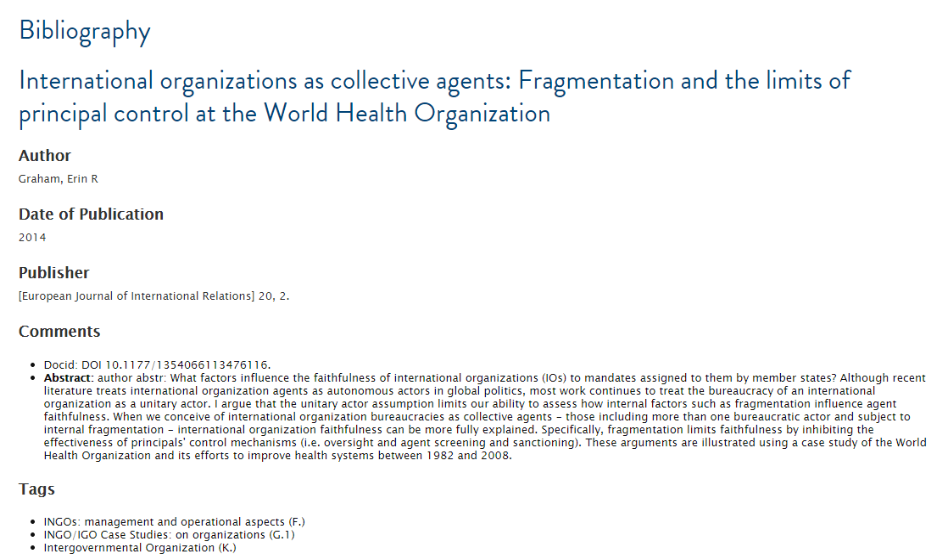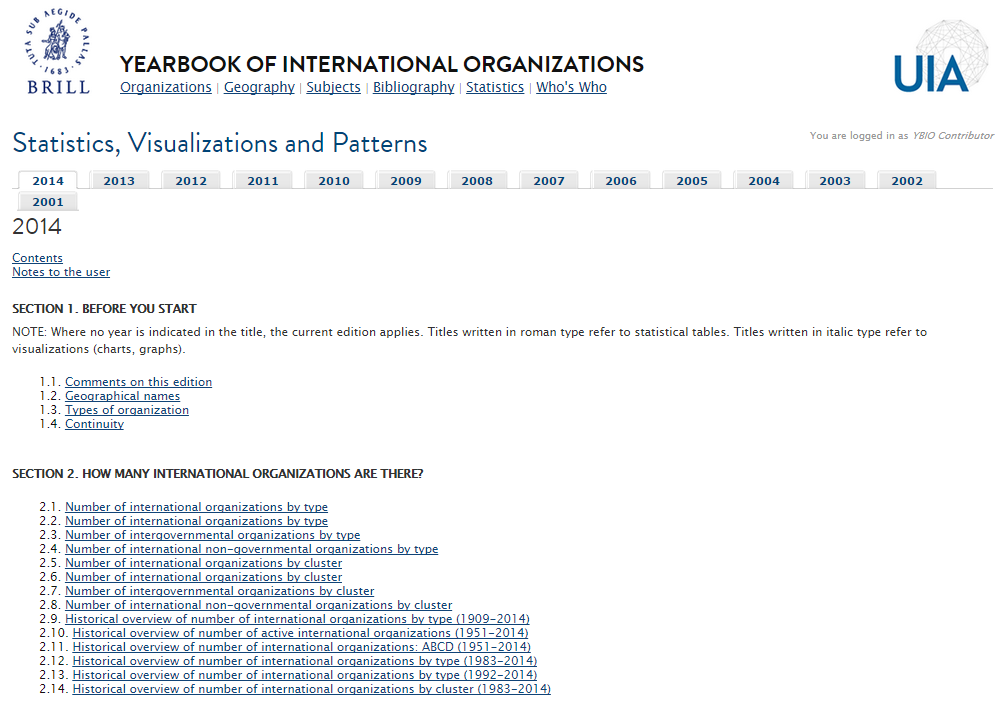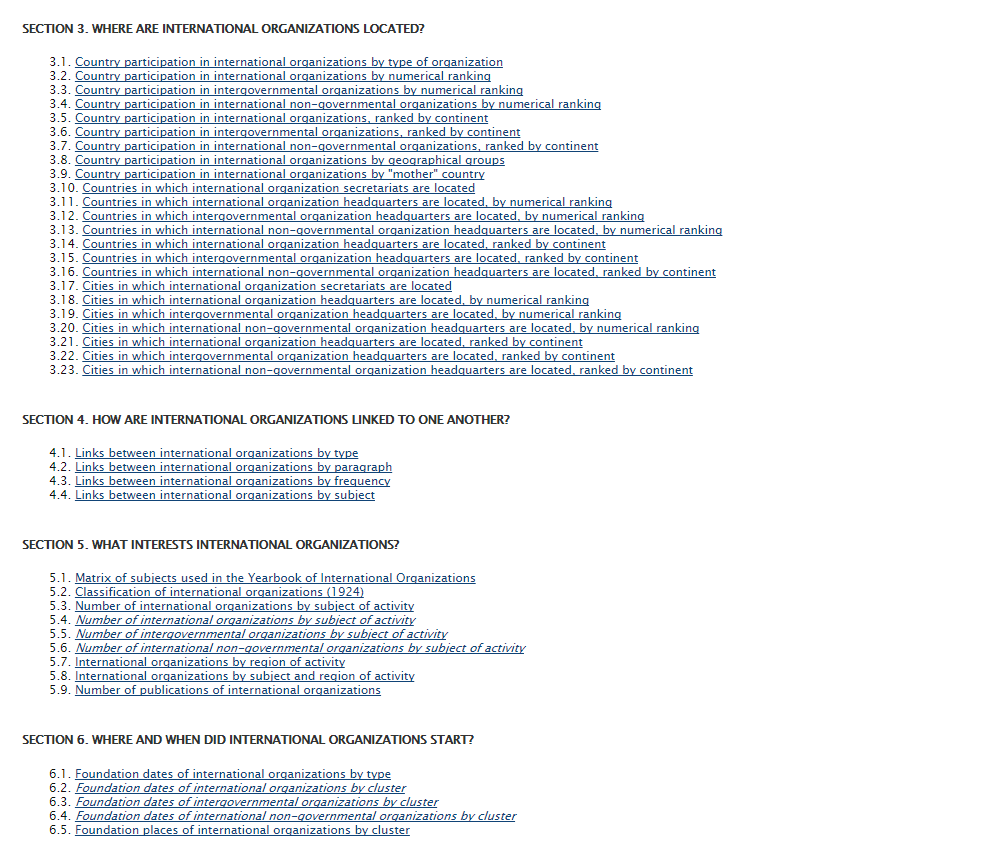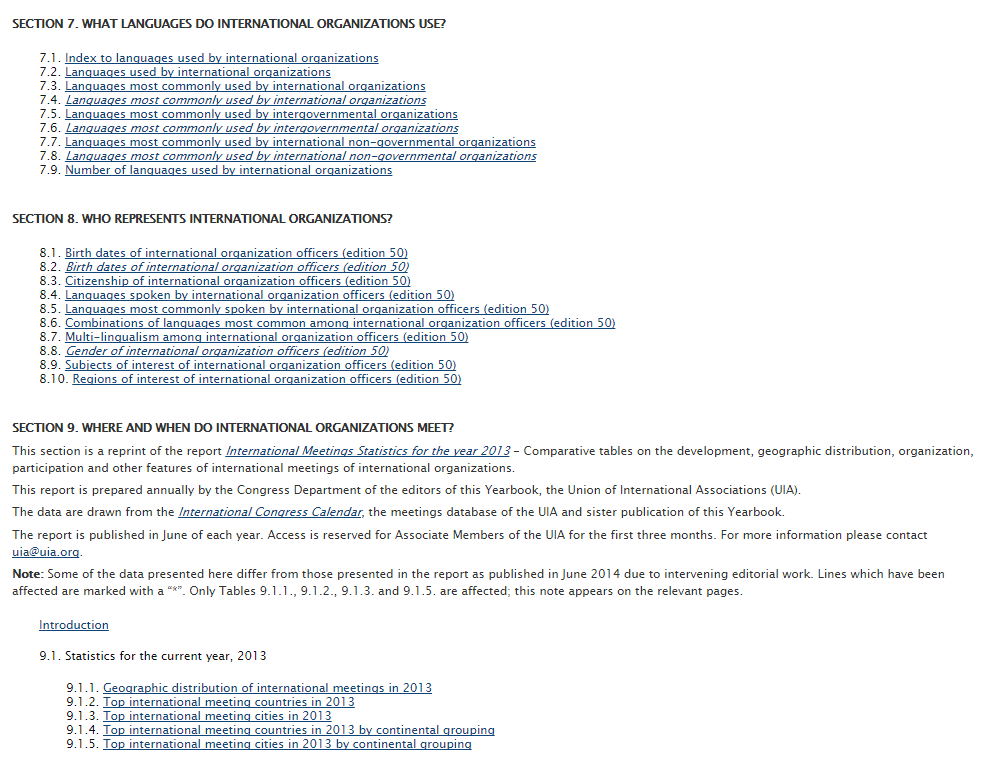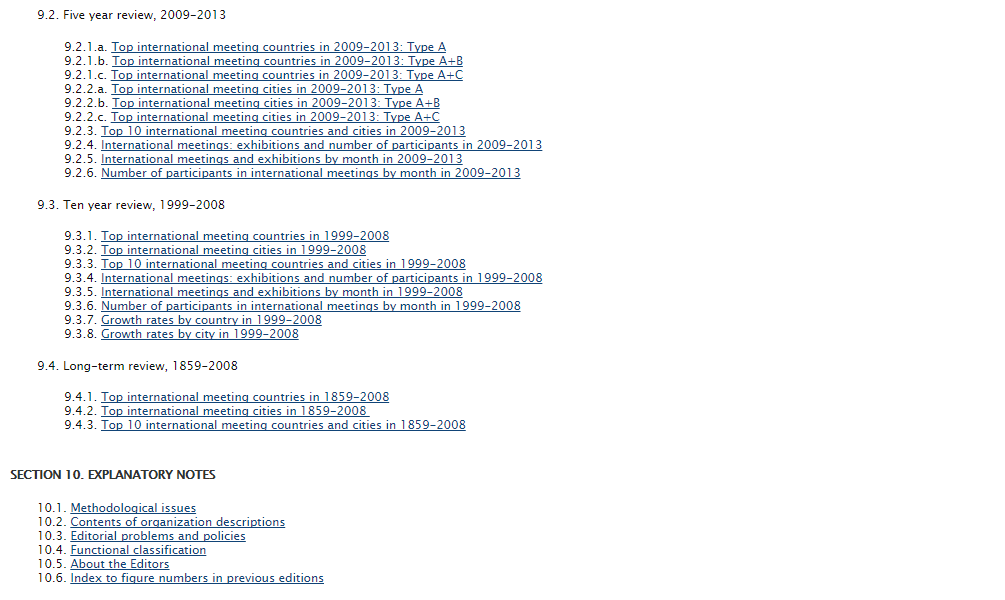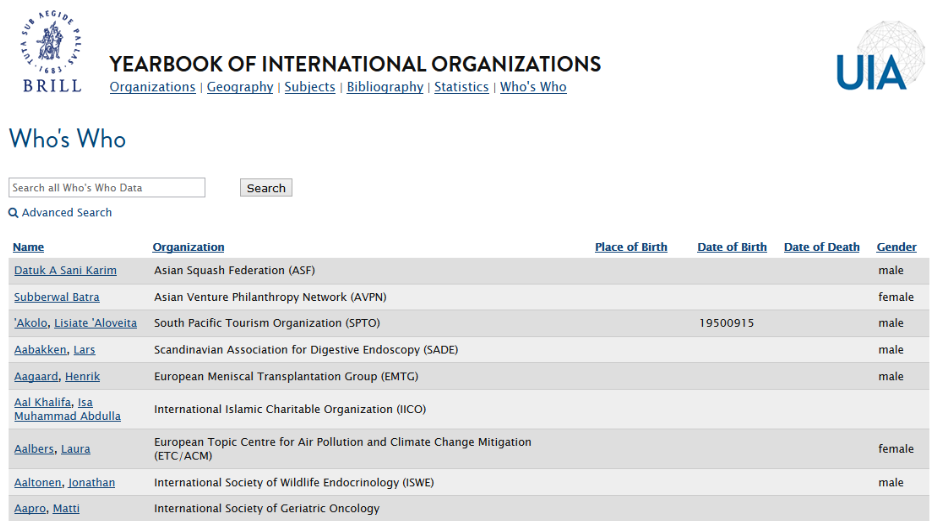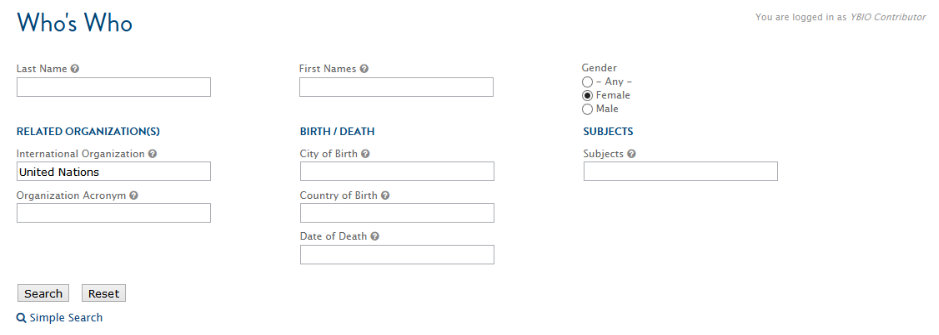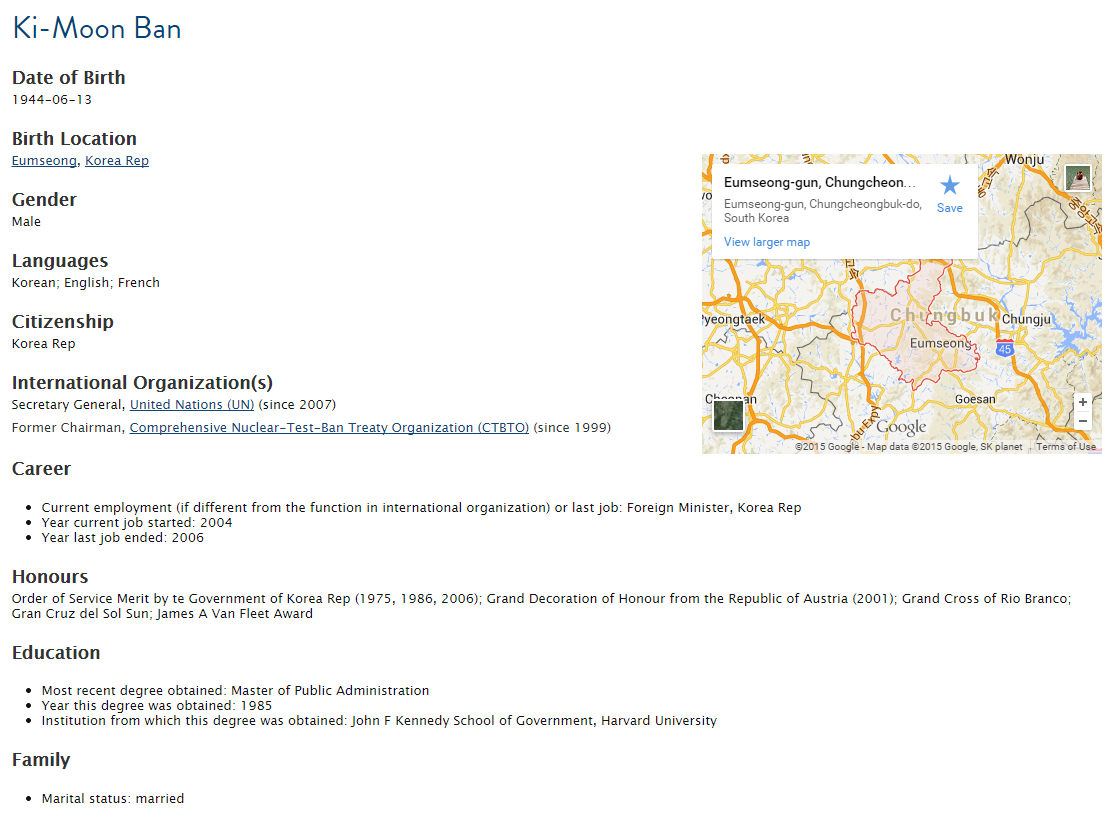Descriptions may include the following information
Addresses
The main address for correspondence, including telephone and fax numbers, and e-mail addresses when available. Secondary addresses are listed below the main address, and include registered offices, continental regional offices, information offices and addresses for secondary correspondence. The address of the organization’s home page is given, if known.
History
The date and location of founding (or of "establishment" in the case of intergovernmental organizations) are indicated under this heading. Other information on the history and changes in structure or name of the organization is also given.
Aims
Principal objectives are summarized, wherever possible on the basis of the organization’s statutes.
Structure
The key organs and commissions of the organization are enumerated, together with some indication of the frequency of their meetings and of composition of the executive body.
Languages
Official and working languages used by the organization are listed. “Official languages” are normally those specified in the statutes of the organization.
Staff
The number of paid and voluntary staff are given.
Finance
Sources of funding and the annual budget figure are given.
Consultative Status
Where the organization has an officially recognized relationship to a major intergovernmental organization, this is indicated.
IGO Relations
Where the organization has a special relationship to an intergovernmental organization, this is indicated. It should be noted that tenuous links, or links that have not been confirmed by both parties, have been omitted from the printed descriptions, although they are available in the online version.
NGO Relations
Where the organization has a special relationship with international non-governmental organizations, this is indicated. It should be noted that tenuous links, or links that have not been confirmed by both parties, have been omitted from the printed descriptions, although they are available in the online version.
Activities
Under this heading appears a summary of the main activities and programme concerns of each organization. Special emphasis is placed on developmental activities, where relevant.
Events
Listed here are the dates and locations of previous and future periodic meetings or other events. For more details on these events, and for full indexes to them, users are directed to the International Congress Calendar.
Publications
Listed here are the titles of major periodical and non-periodical publications of the organization. Titles are indexed and classified in Volume 4 of the print version, and in the 'Bibliography' tab in the online version.
Information Services
Listed here are the names of libraries, databanks and library and publications consultancy services operated by the organization. Websites of these services are listed with the organization's address. Titles are indexed and classified in Volume 4 of the print version, and in the 'Bibliography' tab in the online version.
Members
Listed here are the types of membership and numbers of members. This may include the list of countries represented or in which members are located, and a list of international and regional organization members, when applicable. These countries are indexed and cross-referenced in Volume 2 of the print version, and are searchable in the online version.
Date
The last line of the description includes the date on which the most recent information has been received. Two forms are used:
- 2011.02.16: the organization checked the description and returned it on that date;
- 2009: the organization has not checked the description since that date, but information has been received in the given year from another reliable source (which may be the organization’s own website).
Old dates, or no date, may be an indication that an organization is becoming inactive.


































